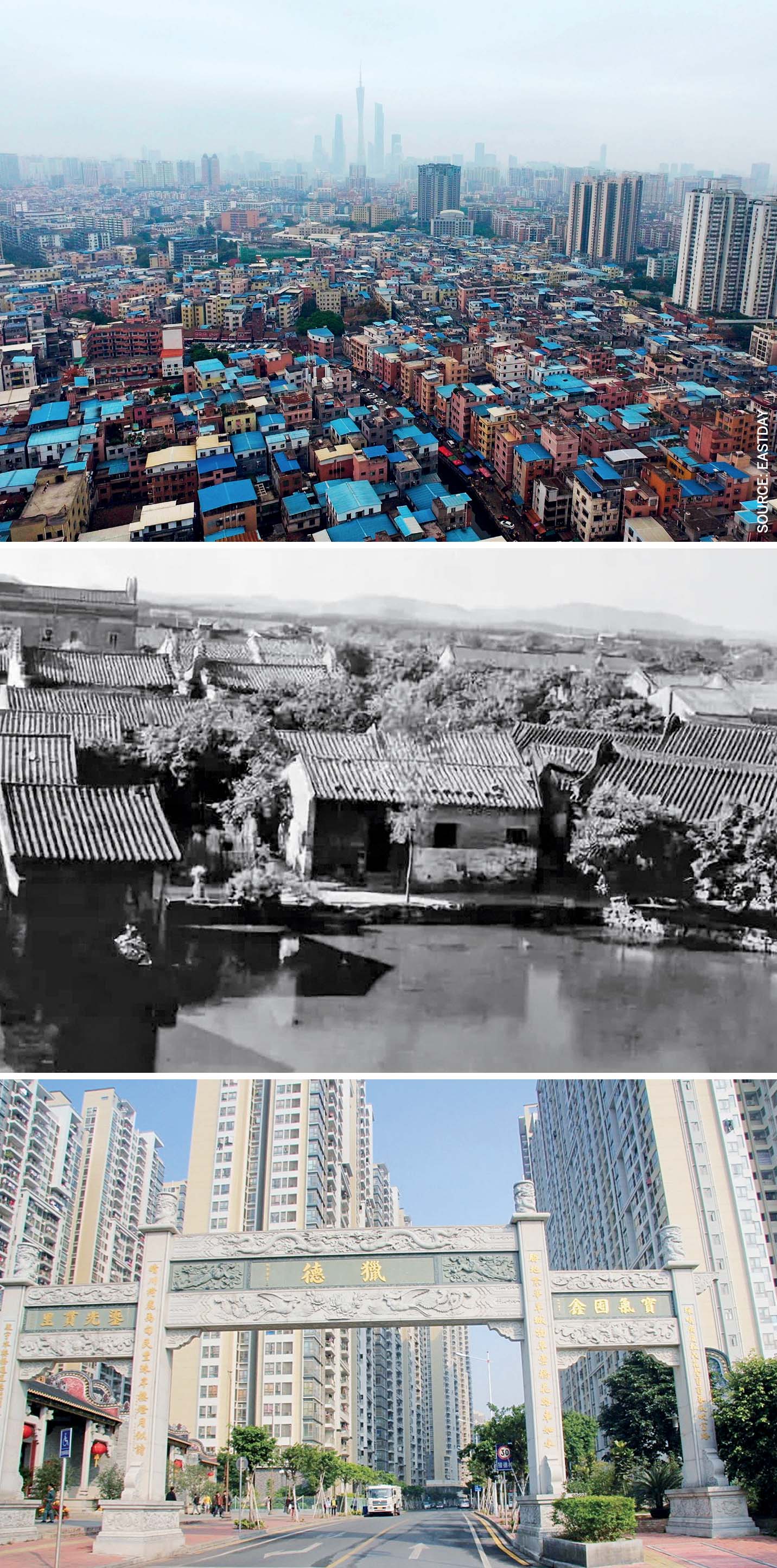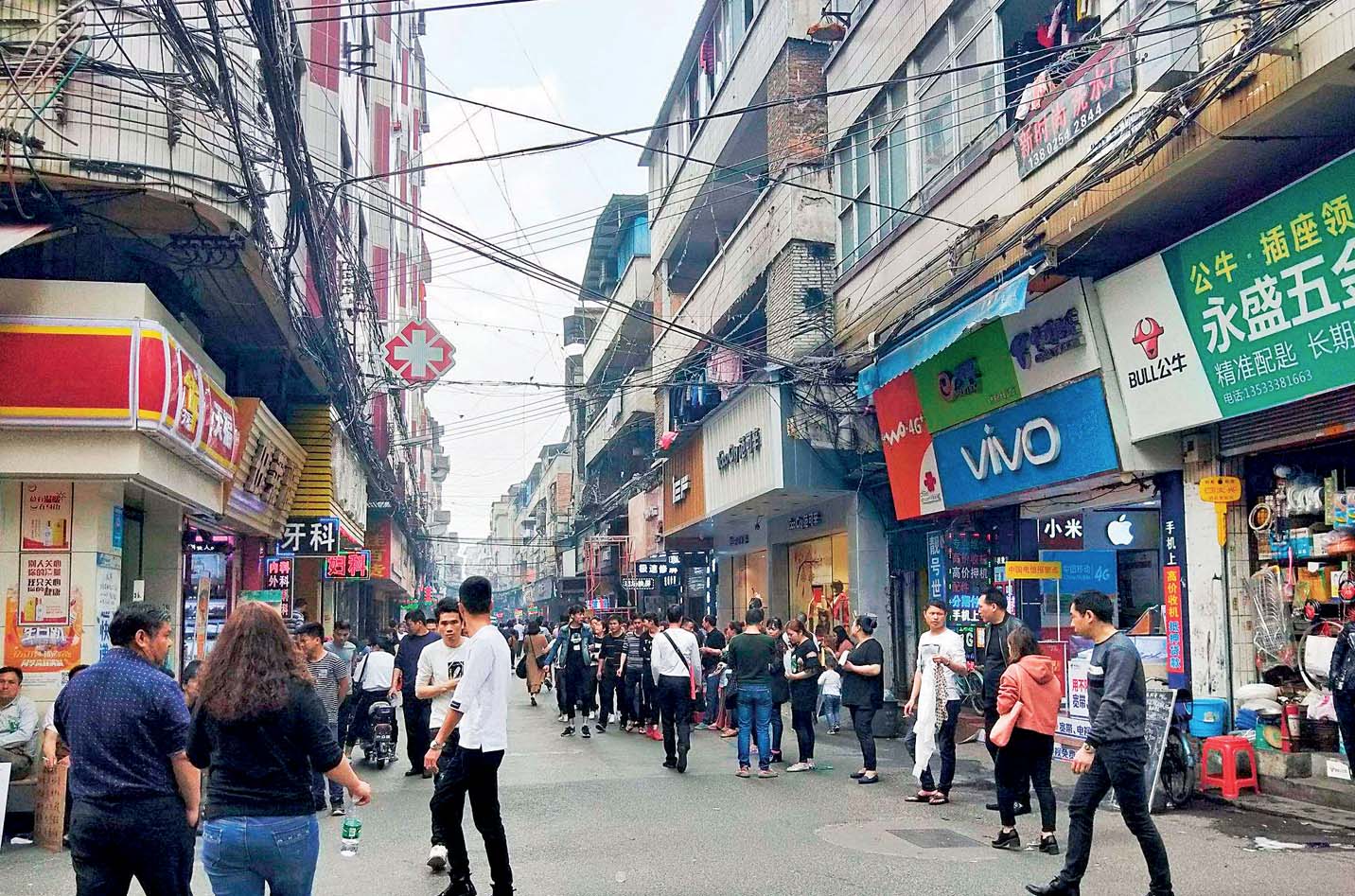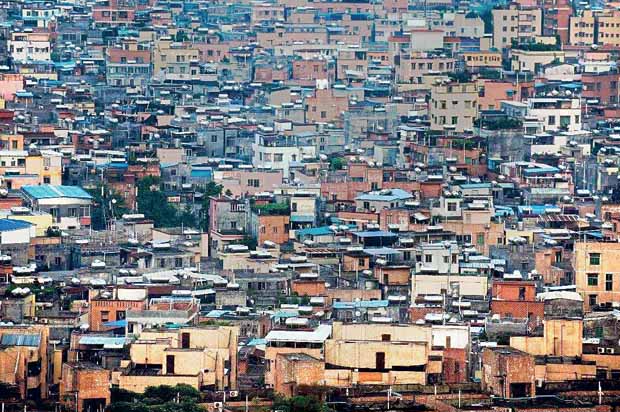Urban villages are a typical phenomenon within the rapid urbanisation processes of Mainland China. Following China’s reform and opening-up in 1978, urban areas have expanded rapidly in economically developed regions, over the past few decades. Rural areas originally distributed around the city were incorporated into the urban territory, surrounded by rows of high-rise buildings, and became ‘villages in the city’. These ‘urban villages’ have often been misunderstood as scars on the city by mainstream planning systems. With the intention to improve urban conditions, the city has undergone tremendous changes: urban villages that displayed a seeming disorder were demolished and replaced by high-quality residential areas and central business districts.
Guangzhou, the third largest city in China, located in the Pearl River Delta area, has faced such challenges since the beginning of the 21st century. Problems such as inadequate infrastructure, poor sanitation, high population density and safety issues caused by diverse demography in urban villages, have prompted the local government to launch campaigns to tear down slums within the city. Amidst the disappearance of these habitats and their traditional daily life and neighbourhood connections, an urgent re-evaluation of urban villages is needed, especially in the light of affordability. Urban villages provide affordable accommodation and small business opportunities for low-income citizens while developing local customs and cultures of the city.

Middle: Liede village in the 1950s
Bottom: Liede village in 2015
Erasure
The image of Guangzhou today may be that of an international metropolis with modern skyscrapers, but it has a long history of traditional communities (villages). Owing to the rapid expansion of its urban space, modern commercial residential districts have occupied most of the land where traditional villages were once situated. Today, only a few old houses, trees or ancestral temples have been preserved amidst the rapid development trends of the past years. Clearly, these landscapes and buildings embedded with the memory of the past also play an important role in developing the city’s culture. They are inestimable and unique resources, which carry almost all local customs and the culture of Guangzhou. It will be impossible to recover the original spatial structure and cultural memory once these villages are removed.
For example, Liede is a village with a history of more than 900 years. It was surrounded by waterways where the original residents lived by means of agriculture for generations before urban expansion started in the late 20th century. It was rich in fruits such as carambola and orange. It also had the reputation of being a water town in the Pearl River Delta area because of its unique location and water networks. Dragon Boat Racing and Lion Dancing were the two most famous traditional events here. Ancestral halls were important places for ancestor worship and family events. There was always a waterscape in the front of the building, with particular attention to traditional Chinese Feng Shui.
Urban villages provide affordable accommodations and small business opportunities for low-income citizens
However, today, Liede is well known for its high priced housing, rather than as a historical village from the Northern Song Dynasty. Until the 1980s, most of the local residents were still working farmers. Compared to the dwelling districts built in the 1990s, this was regarded as an informal settlement by the government due to its outdated infrastructure system and buildings with safety risks. At the time, ‘Dirty, Messy and Poor’ was the image of Liede Village in the eyes of the general public. Over the past ten years, Zhujiang New Town, a new central business district that is part of the expansion of the city, has replaced the village and Liede is now a part of this area.
Interestingly, most of the native residents no longer depend on the traditional agricultural industry, but on the money they receive by renting their houses. Because of the reconstruction of the village, the residents lost their original houses and most of them got more than a single new apartment as compensation. They became millionaires overnight. In other words, Liede has become a commercial-residential area for people from different cities living together; especially for those with high incomes, rather than the original residents of the village alone. Ironically, although some may argue that the living environment has been largely improved after reconstruction, for the younger generation, the Liede community has today become a symbol of wealth, instead of a symbol of memories associated with historical customs and culture.

Accommodation
Today, rapid economic development has transformed Guangzhou into a world-class city. However, very few are talking about how the migrant population has contributed greatly to this urban expansion in different aspects such as civil infrastructure, service industry and architectural engineering. Although some of them became citizens of Guangzhou – having their own permanent house and running their own business – most of them are still struggling to become a real part of the city. In China, Guangzhou is still one of the most attractive cities for the younger generation from rural areas searching for job opportunities.
For these migrant workers, it is important to look for a place to settle down in a high consumption international metropolis. Since housing rent isn’t much in the urban village, it has become an attractive place for the migrant population, especially newcomers with limited incomes. Tangxia, in the Tianhe district in Guangzhou, for example, has the largest community of migrant population. Around 350,000 people live with poor sanitation facilities, in narrow and chaotic spaces. They live in semi-urban buildings, narrow alleyways with electrical wires crossing every corner of the space between buildings. A studio costs only US$ 120 per month compared to more than US$ 500 per month rent in a formal residential unit, thereby allowing a small family to live together. Although most of the low-income migrant workers do not have access to public education, health care and other basic social services, they still live in the city serving the general public and hoping to change their lives. Undoubtedly, it is because the urban village provides low-cost and convenient housing for these migrant workers that the city functions normally. It is hard to imagine what would happen to cities like Shanghai, Beijing and Guangzhou without any migrant workers living and working there.
Guangzhou is still one of the most attractive cities for the younger generation from rural areas searching for job opportunities
Lifestyle
Prior to moving to the city, most of the migrant workers were farmers in rural areas. Becoming an urbanite with a high-consumption lifestyle is difficult for them. While they live and work in the city, most still retain the original lifestyle of farmers. Compared to modern commercial centres such as shopping malls and supermarkets like Walmart or Carrefour, the urban village is another type of small business world that provides all commodities necessary for daily life at lower prices with bargaining also tolerated.
Sanyuanli is today the second largest urban village in Guangzhou with more than 100,000 temporary residents. The village centre here is a narrow street connecting the interior alleys of the village with the outer urban street. Shops along the street provide various services such as foot massage, medical clinic, furniture and food products. Due to limited space, there is not enough public space for daily activities and the street has become the most popular recreational place for the resident migrants. The street as a commercial centre is a ‘living room’ for the public to get together, chat with one another, play Mahjong or Chinese Chess and to improve interpersonal relationships.
The busiest time on the street is at night when people return from work. The night market has become a popular business type, providing an opportunity for people to sell and buy. For young people, restaurants along the street have become coveted hangouts, as they prefer to meet their friends for dinner or share their daily experience. For those who live here, Sanyuanli is an affordable city where they can stay and struggle to achieve the ‘Guangzhou Dream’.
As Doug Saunders argues in his book Arrival City: How the Largest Migration in History Is Reshaping Our World, we should welcome the newcomers and embrace their diversity, instead of fearing informal villages in the city. For these migrants, life in the city is usually better and healthier than where they lived earlier. They move with hopes and dreams from the rural to the urban village. We should protect them, instead of tearing down their informal cities.
Supported by the National Natural Science Foundation of China (Grant No.51808229)
All photos source: SOHU




Comments (0)